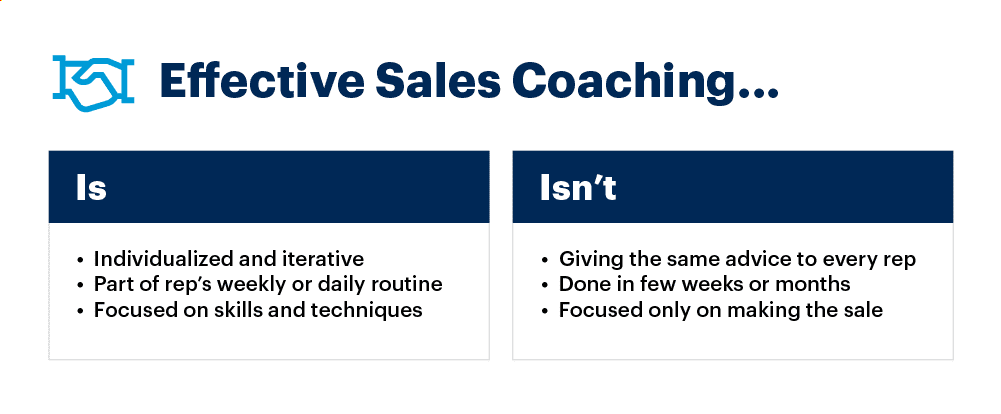She shoots, she scores! Nailing that buzzer-beater didn’t just randomly happen. The technique, the confidence, the setup – all came together as planned over the past few months of teamwork and coaching. The same holds true when it comes to setting sales reps up for success each quarter through what your team practices every week, especially in your pipeline reviews. Let’s face it, March is Madness…Oh and there’s a men’s tournament going on as well!
Back to B2B selling. We’ve all heard the phrase practice makes perfect. But does it really? Or does practice just instill habits? Maybe a more honest saying is practice makes permanent.
As sales leaders, we’re constantly in the business of instilling permanence in our sales team through our weekly activities. Your team meeting cadences, customer / prospect management style and what you coach your reps to focus on all determine your organization’s success.
Making sure your team is practicing effective sales tactics is crucial as a leader. If your playbook is off, and you’re having your reps focusing on and repeating ineffective sales habits, you should expect those bad habits reflected in the coming quarters.
This is especially true for one of the most impactful pieces of your sales organization: your pipeline review meetings. The thought process behind traditional pipeline reviews is that if you hold the meetings frequently, your reps will be on top of all their deals and data, being sure no deals die in the funnel.
While not necessarily wrong, this methodology misses an important piece of the puzzle. If you want to get the most out of your pipeline review meetings, you need to make sure you’re doing them well, not just often. Remember, practice makes permanent, not perfect.
Practice Makes Permanent, Not Perfect
Unfortunately, most of the time, sales managers aren’t using the right playbook in their pipeline review meetings. More often than not, they use these meetings to focus on late-stage opportunities or give their reps garden-variety closing tips. As a sales leader, coaching with a playbook designed to quickly brush over your team with broad, impersonal strokes is setting yourself, your reps and your organization up for failure.
Instead, sales managers should be using their pipeline reviews to improve the way their reps manage their open opportunities and prioritize their time to ensure the team is being effective as possible. For instance, are you and your reps taking the crucial step of taking advantage of the early stage of your sales funnel?
Thankfully, revamping your sales pipeline review playbook is not a difficult task. Here are 3 simple steps to ensure you’re getting the most out of your pipeline review meetings.
3 Ways to Improve Your Pipeline Review Playbook
1. Separate Pipeline Reviews from Forecasting
It’s all too easy to fall into the trap of using pipeline reviews to closely inspect the next 5 or 10 opportunities a rep is slated to close. This is only natural, because it helps a sales manager build or refine their forecast and decide whether they need to take immediate steps to hit their number. While important, focusing all your energy on these late-stage deals limits the potential to drive more revenue.
When structured properly, there is ample time in a pipeline review to quickly cover those late-stage deals (after all, they are likely buttoned up) and then dissect those opportunities in the early stage of the sales funnel. Start to ingrain the important questions into your reps. How are you going to work this opportunity? What do you think the next step is? Why did you move it back from presenting the solution to qualifying? Getting your team to start answering these important questions will ensure they become the playmakers your sales organization needs to win.
2. Free Up Time to Incorporate Sales Coaching
Coaching is one of the most important parts of a sales manager’s job, but most sales managers feel they don’t have enough time to do it in a meaningful way. Manually sifting through countless spreadsheets of data from their CRM platform to try to accurately predict your sales forecast for the month eats up the majority of their time. It’s an occurrence the sales world is all too familiar with. Today, machine learning-driven revenue intelligence platforms can remove the burden, automatically capturing and analyzing massive datasets a human could never accurately collect and interpret themselves.

3. Establish the Right Cadence
Are your pipeline reviews weekly? Biweekly? Monthly? Ad-hoc? A regular schedule is key to keeping reps’ pipelines healthy and uncluttered. You must work with them routinely to ensure a pipeline’s continued health. This means establishing a regular cadence for your meetings. Hold at least two meaningful pipeline review meetings every month – one in the first few days, and one in the middle of the month.
Remember, practice doesn’t make perfect. Practice makes permanent. Simply going through the motions two times a month in your pipeline review meetings doesn’t cut it. Your sales team needs a path to succeed, and it’s up to you to cultivate it.
Ready to learn how to run your pipeline reviews like an expert? Download our free guide now!




